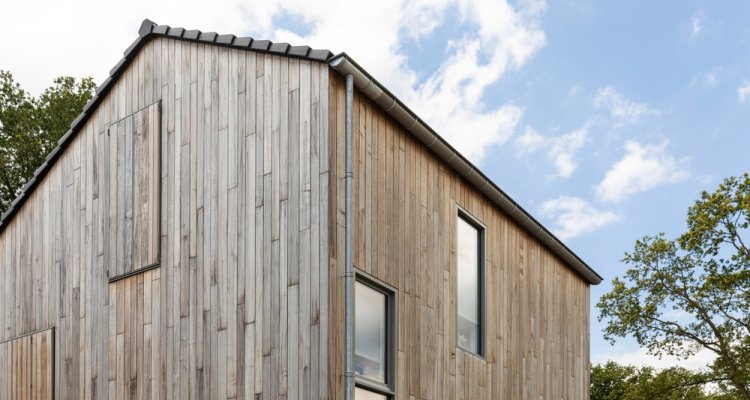
News
Timber construction addresses housing and climate crisis
Timber construction offers an innovative solution for both the housing and the climate crisis, according to researchers Jop Woltjer and Angelina Horsting from Wageningen Economic Research in their report ‘Wood it be possible: constructing timber houses in the Netherlands’. “If we are to achieve our ambitious goals for sustainable housing in the Netherlands, we need to drastically review our building practices and material use," Horsting stresses. "A focused strategy that encourages knowledge sharing, innovation and collaboration can push timber construction forward as the key in a greener, more sustainable future for our housing market."
Currently, the use of wood as a building material tends to have a symbolic meaning, according to the researchers. "Wooden houses are now often regarded as a luxury. However, if this perception shifts to a standard solution that is accessible to first-time buyers, sustainability and housing can go together perfectly," Horsting argues.
Fast construction with low carbon emissions
Amid the current acute housing shortage, Horsting notes that circularity and sustainability are often overlooked, but this is not necessary. "Timber construction can play a crucial role in achieving the full scope of the National Housing and Construction Agenda. With the relatively fast construction time and low carbon emissions when using wood compared to traditional materials like steel and concrete, it is the ideal candidate to address both housing and climate crisis at the same time."
Changing material dependence
However, the move to more sustainable construction methods requires some important adjustments. "The construction industry has relied on concrete and steel for decades, pushing wood into the background," Horsting explains. "Contractors often find it difficult to estimate the costs of timber construction due to fluctuating timber prices and the lack of standardisation. Partly due to these uncertainties, risk-averse investors are wary of investing in timber construction."
Prejudices about timber structures
Over the years, scepticism about wooden structures has arisen from a historical perspective in which the switch from wood to stone was seen as progress. "These prejudices have remained persistent. In addition, timber construction is unfairly associated with excessive tree felling, so it is seen as unsustainable and a step backwards," Horsting concludes.
A high-profile example of timber construction: Plus Ultra III
An excellent example of the potential of timber construction in the Netherlands is Plus Ultra III on the Wageningen Campus. This innovative building highlights the aesthetic potential of modern timber structures. An all-timber construction was deliberately chosen due to the building's proximity to a Natura 2000 site and to minimise the environmental impact. Plus Ultra III is not only a practical solution to accommodate space and technology needs on campus, but also symbolises the future of building in harmony with our natural environment. This project illustrates how timber construction can be aesthetically, functionally and ecologically progressive and provides an inspiring model for future timber construction projects.